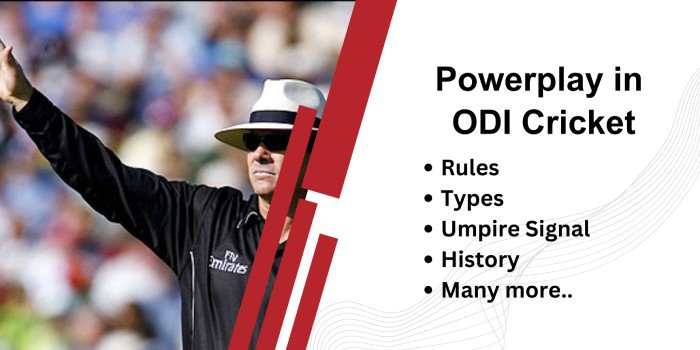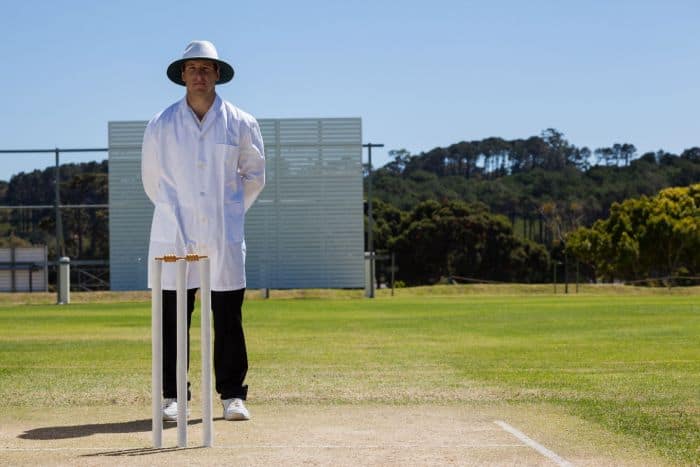
The role of Powerplay in ODI cricket usually goes unnoticed among fans, but it plays a very crucial role in balancing a 50-over match. Since its introduction in 2005, the rules governing powerplay have undergone five significant revisions, underscoring its importance.
In this post, I am going to decode everything about powerplay in ODI cricket. After reading this, you will know exactly what powerplay is & how it works, and what are the rules behind it.
What Exactly is Powerplay in ODI Cricket?
Powerplay is a rule that deals with the number of fielders outside the 30-yard circle for different sets of overs of ODI cricket. The main reason behind the introduction of the powerplay rule in ODI cricket is to maintain the balance of the game.
It’s crucial to note that these regulations apply to the fielding team; any breach of Powerplay rules will result in the fielding team facing consequences.
ODI cricket has 3 power plays, which means different fielding restrictions are applied to three different sets of overs. Let’s understand this in more detail.
3 Powerplay of ODI Cricket
3 Powerplay in ODI cricket are as follows:
Powerplay 1(Overs 1-10) –
For these overs, a maximum of two fielders are allowed outside the 30-yard circle. You can also consider this powerplay as a batting powerplay since it gives more freedom to the batters to hit 4s or 6s. This powerplay is also termed as “P1”.
Powerplay 2(Overs 11-40) –
In this phase, a maximum of 4 fielders are allowed outside the 30-yard circle. This is the longest powerplay in ODI cricket since it is enforced for 30 overs. This is also termed as “P2”.
Powerplay 3(Overs 41-50) –
In the final 10 overs of an innings, a maximum of 5 fielders are allowed outside the 30-yard circle. Some people also called this powerplay “death overs” or “slog overs” or “P3”. In this powerplay, batters try their very best to score as much as possible.
You should note that the fielding team captain can also put less number of fielders than the maximum limit outside the 30-yard circle in any powerplay.
How Umpire Signals Powerplay?

Before the start of any powerplay in ODI cricket, the umpire has a special hand signal with which he indicates to the scorer & fielding team about the field restrictions.
What Umpire Signals?
The umpire can be seen rotating their arm in a windmill motion one or two times.
Do you know there are 18 umpire signals that exist today? See all 18 Cricket Umpire Signals
What if the Fielding Team Violates the Powerplay Rule?
You should note that the fielding team never violates powerplay rules intentionally. This generally occurs due to carelessness or mistakes of players & captains. However, in case of a rule violation, the fielding team is punished with a no-ball followed by a free hit.
Why is Powerplay Important in ODI Cricket?
To understand the importance of powerplay in ODI cricket, you should think from both the batter’s & bowler’s perspective. Let us consider an example.
1. Batter Perspective:
Imagine a scenario with no Powerplay rules. As a batsman, scoring runs would be challenging because the fielding team could position their fielders anywhere. However, with Powerplay 1, I, as a batter, gain the freedom to score runs at the start of innings.
Again, if there were no powerplay rules, then the fielding team could set any number of fielders outside the 30-yard circle in the death overs; consequently, as a batter, I would find it difficult to score runs when my team needed the most.
2. Bowler Perspective:
Put yourself in the shoes of a bowler. With the new ball, I understand that the batsman will struggle against swing and seam, leading to mistimed shots and potential catching opportunities within the 30-yard circle. In such a scenario, I’d want more fielders positioned close to the batsman. Here the significance of 1st powerplay arises as a bowler.
It’s in this balance, where both batsmen and bowlers have opportunities to influence the game that the true essence of Powerplay lies. It ensures fairness and excitement in the sport.
Will the Powerplay Overs be Affected If Overs Are Shrunken?
If the game is interrupted by rain or any other reason for a long time, then the playing overs are reduced. Simultaneously, the overs associated with each powerplay will also be reduced.
Which Powerplay is applied in Super Over?
During high-pressure super over, the batters need to score as much as possible while the bowler does not have any luxury of swing & seam of the new ball. Hence the Powerplay 3 fielding restrictions are enforced in the super over to maintain fair & balanced contests.
History of Powerplay in ODI cricket
- 1980: The fielding restrictions were first introduced in ODI cricket in 1980. According to this, only two fielders were allowed outside the 30-yard circle in the first 15 overs, while 5 fielders were allowed for the rest of the overs.
- 2005: The term powerplay was introduced in 2005 & now ICC splits fielding restrictions into three blocks of overs. This consisted of the first mandatory ten overs with two fielders outside the thirty-yard circle while two more 5-overs-powerplay, which was taken by the fielding team at any time of the game.
- 2008: Since the fielding teams were taking two powerplays just after the completion of the first 10 overs, this produced some unfairness in the game. To counter this, ICC tweaked the rules & gave luxury to the batting team to choose the timing of one of the two 5-overs-powerplay.
- 2011: ICC brought new rules to tackle the timing of two powerplays. With these rules, two 5-over- powerplay must be taken between the 16th over & 41st over of an inning by both batting & bowling teams.
- 2012: Before 2012, during non-powerplay overs maximum 5 fielders were allowed outside the thirty-yard circle. This was reduced to 4 in 2012.
- 2015: Some months after the completion of World Cup 2015, ICC adopted the powerplay model which is in use today.
Leave a Reply